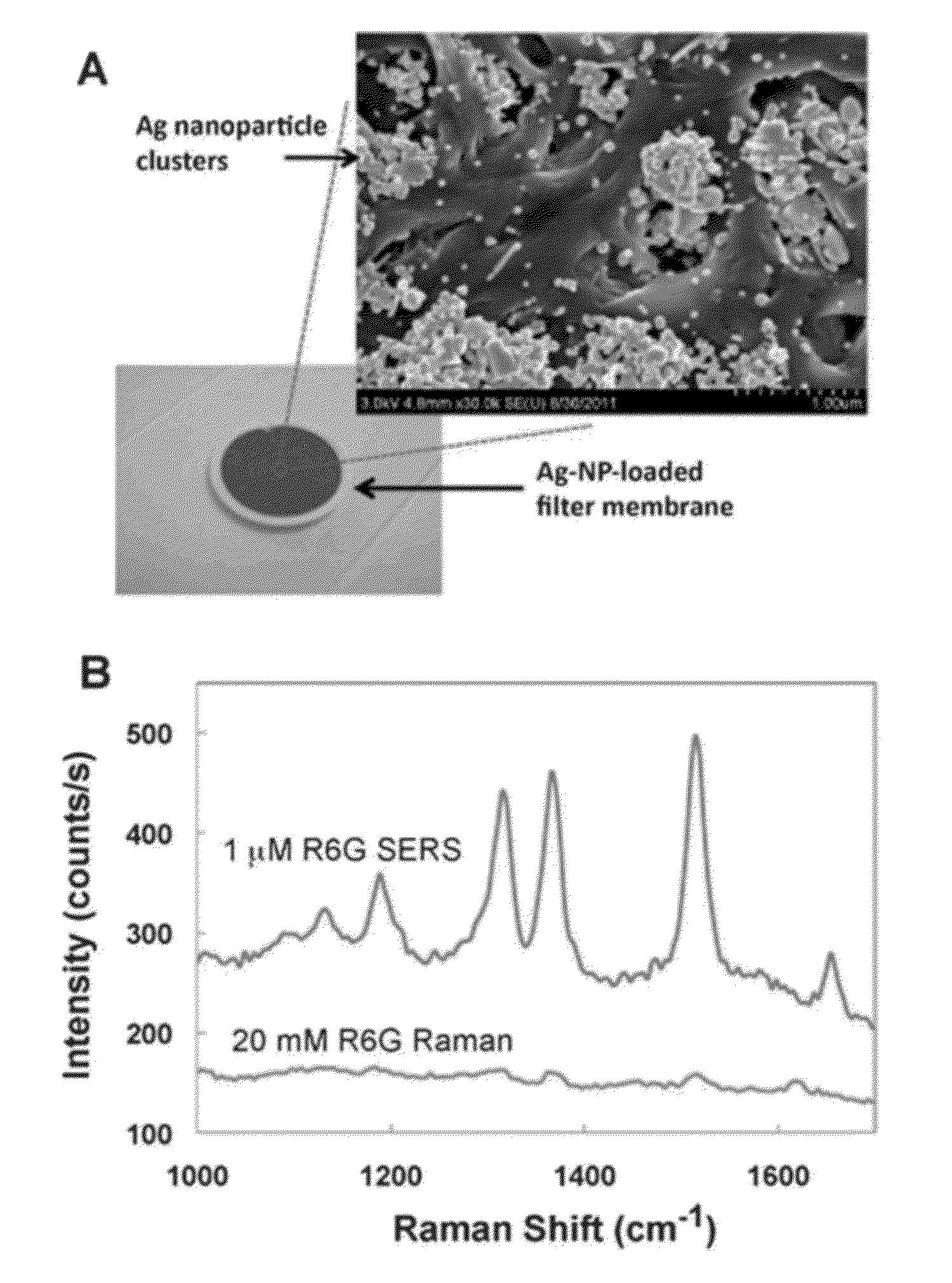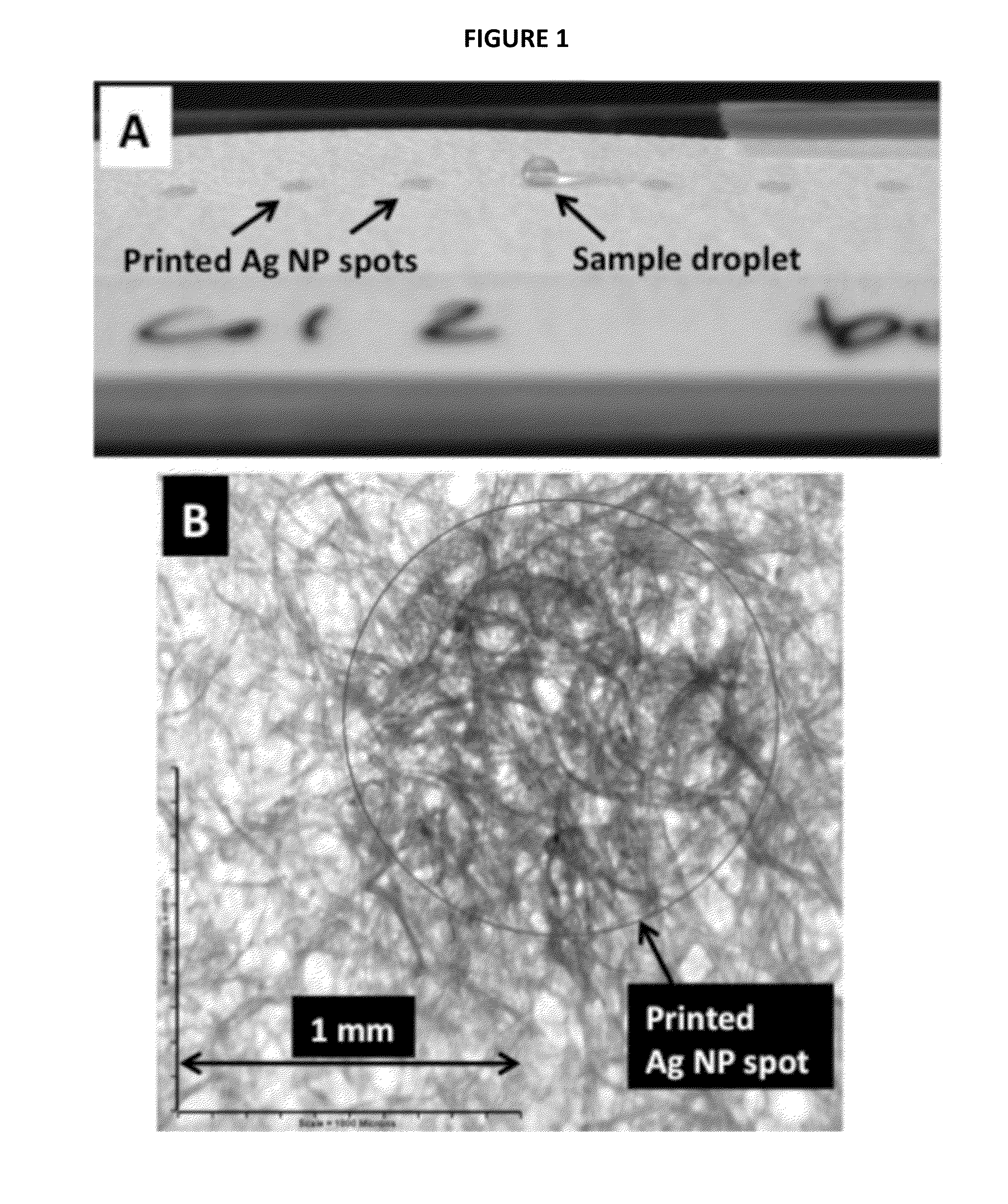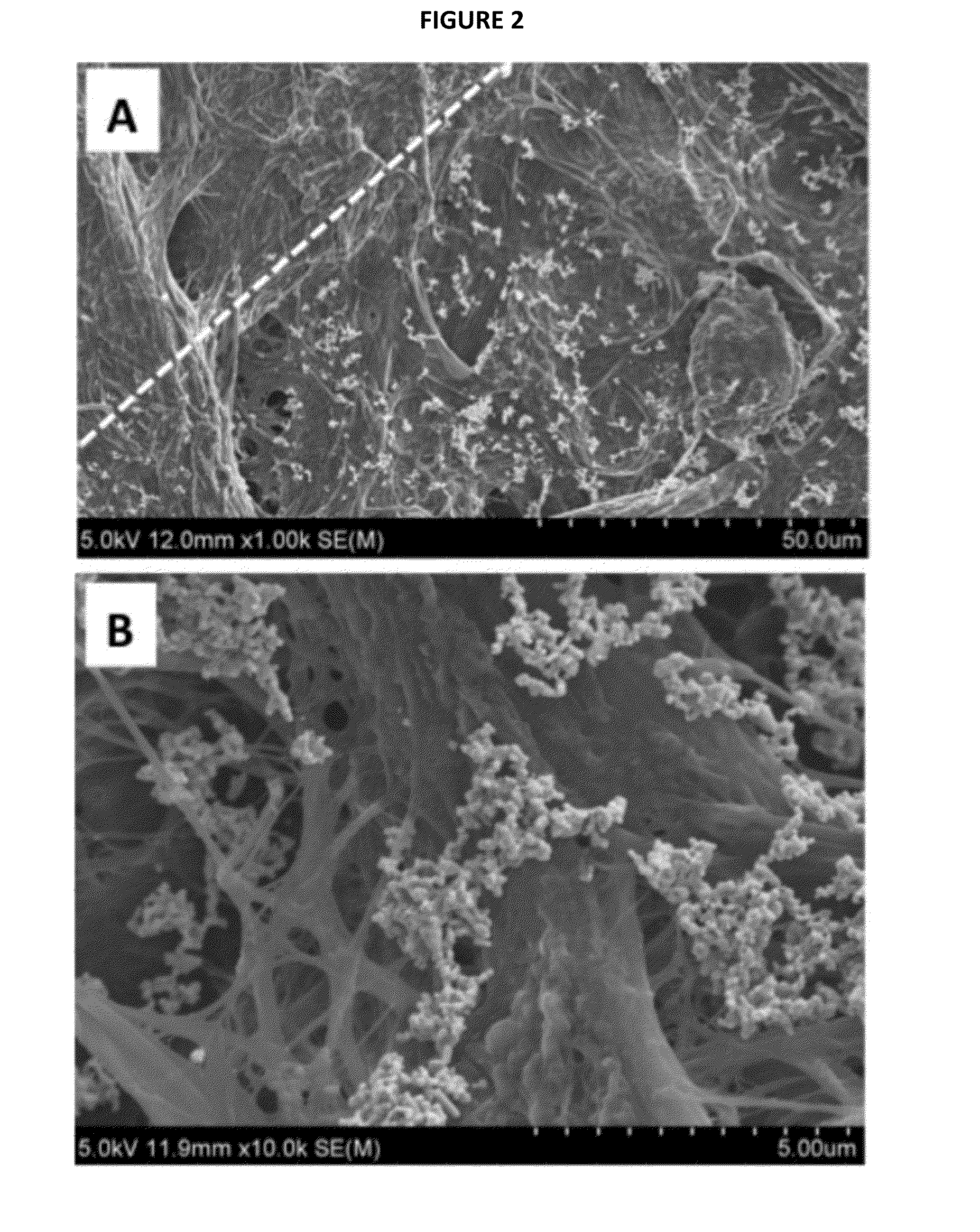Porous SERS analytical devices and methods of detecting a target analyte
a technology of raman spectroscopy and analytical devices, which is applied in the direction of spectrometry/spectrophotometry/monochromators, optical radiation measurement, instruments, etc., can solve the problems of high cost, time-consuming, and laborious methods, and achieve the effects of avoiding the high cost of nanofabricated sers substrates and the complexity associated, improving detection limits, and low variation
- Summary
- Abstract
- Description
- Claims
- Application Information
AI Technical Summary
Benefits of technology
Problems solved by technology
Method used
Image
Examples
example 1
[0058]Materials
[0059]Fisherbrand chromatography paper, 0.19 mm in thickness, was used for the substrate. Hexadecenyl succinic anhydride (ASA) from Thermo-Fisher Scientific (Pittsburgh, Pa.) was used to create a hydrophobic surface on the paper. Silver nitrate, sodium citrate, glycerol, and hexanol were obtained from Sigma-Aldrich (St. Louis, Mo.). Rhodamine 590 chloride, also known as Rhodamine 6G (R6G), was purchased from Exciton (Dayton, Ohio).
[0060]Nanoparticle Synthesis
[0061]Silver nanoparticles were synthesized using the method of Lee and Meisel (Lee P. C. and Meisel D. (1982) J. Phys. Chem. 86:3391-3395). Briefly, 90 mg of silver nitrate was added to 500 mL of ultrapure water (18.2 MΩ), which was then brought to a boil in a flask under vigorous stirring. Sodium citrate (100 mg) was added, and the solution was left to boil for an additional 10 min. After the solution turned greenish brown, which indicated the formation of silver colloid, it was then removed from the heat.
[0062]...
example 2
[0081]We demonstrate the detection performance of the filter SERS technique of at least 1-2 orders of magnitude better than the typical approach of drying a sample in silver colloid onto a surface. We achieved a detection limit of 10 nM for the common model SERS analyte Rhodamine 6G (R6G) using a portable spectrometer and diode laser. Furthermore, we demonstrate the utility of the filter SERS technique for field based applications by detecting parts per billion (ppb) concentrations of melamine, a food contaminant, as well as ppb concentrations of malathion, a widely used pesticide, in aqueous solution. The disclosed technique shows relatively low variability, and all acquired data sets could be fit well with a Langmuir isotherm. This indicates that the disclosed field based technique is not only simple and sensitive, but it can also be quantitative.
[0082]Materials
[0083]Nylon and Millipore PVDF filter membranes, 13 mm diameter, 0.22 μm pore sizes were purchased from Fisher Scientific...
example 3
[0109]Fabrication and Operation of Optofluidic SERS Dipstick
[0110]A low-cost commercial piezo-based EPSON inkjet printer was used to print the SERS active substrates on chromatography paper. To form the ink, a silver colloid, prepared by the method of Lee and Meisel (1982), supra, J. Phys. Chem. 86:3391-3395, was concentrated 100× by centrifugation; glycerol and ethanol were added (40% and 10% by volume respectively) to optimize the surface tension and viscosity for optimal printing. The ink was added into re-usable cartridges and printed 10 times onto the desired regions of the paper (FIG. 12a). After printing silver nanoparticles onto the paper, individual dipsticks were cut out of the sheet. The end of the dipstick containing the silver nanoparticles serves as the detection region, while the rest of the paper strip serves as the sample collection zone.
[0111]For the dipstick experiments reported here, 5 μL of Rhodamine 6G (R6G) in methanol was added to the sample collection zone. ...
PUM
| Property | Measurement | Unit |
|---|---|---|
| volume | aaaaa | aaaaa |
| diameter | aaaaa | aaaaa |
| optical density | aaaaa | aaaaa |
Abstract
Description
Claims
Application Information
 Login to View More
Login to View More - R&D
- Intellectual Property
- Life Sciences
- Materials
- Tech Scout
- Unparalleled Data Quality
- Higher Quality Content
- 60% Fewer Hallucinations
Browse by: Latest US Patents, China's latest patents, Technical Efficacy Thesaurus, Application Domain, Technology Topic, Popular Technical Reports.
© 2025 PatSnap. All rights reserved.Legal|Privacy policy|Modern Slavery Act Transparency Statement|Sitemap|About US| Contact US: help@patsnap.com



